
Reflectors in space could make solar farms on Earth work for longer every day
Three decades after the first and only time that a mirror was launched to demonstrate solar energy could be reflected from space to Earth. My colleagues and I believe it’s time to revisit this technology.
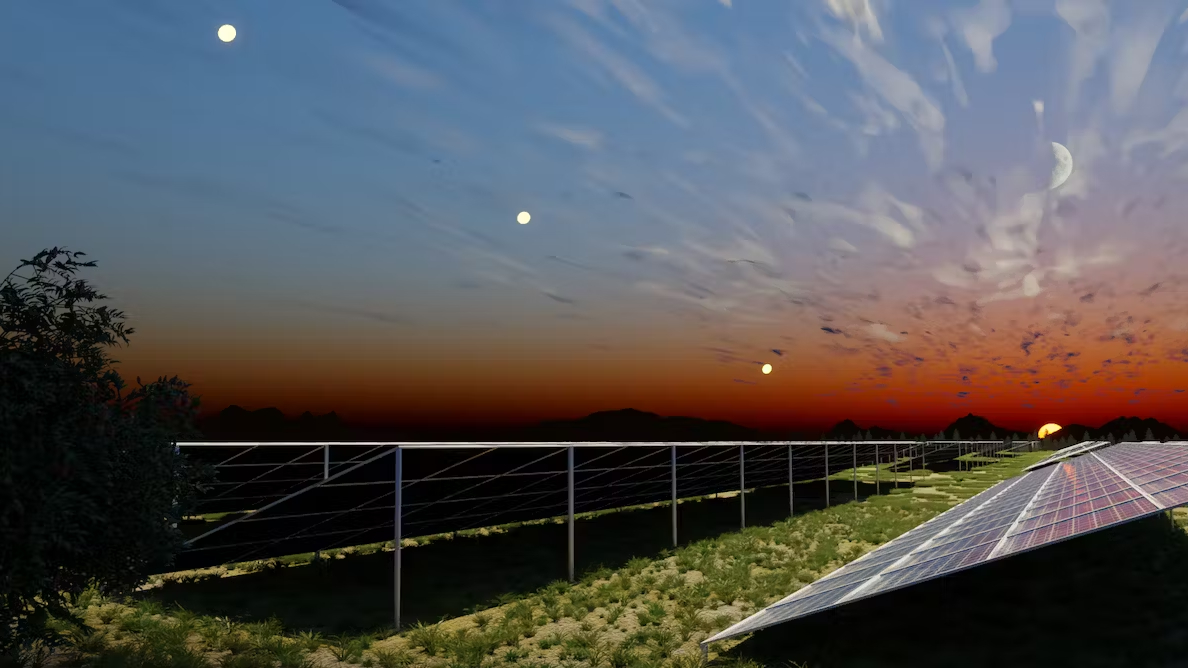
This article was originally published at The Conversation. The publication contributed the article to Space.com's Expert Voices: Op-Ed & Insights.
Onur Çelik is a postdoctoral research associate in space technology at the University of Glasgow.
If you happened to be looking at the sky in Europe on a cold night on February 5 1993, there is a chance you could have seen a dim flash of light. That flash came from a Russian space mirror experiment called Znamya-2.
Znamya-2 was a 20-metre reflective structure much like aluminum foil (Znamya means "banner" in Russian), unfurled from a spacecraft which had just undocked from the Russian Mir space station. Its goal was to demonstrate solar energy could be reflected from space to Earth.
This was the first and only time that a mirror had ever been launched into space for that purpose. But, three decades on, colleagues and I believe it's time to revisit this technology.
Related: These scientists want to put a massive 'sunshade' in orbit to help fight climate change
Unlike proposals to build solar power stations in space and transmit energy down to earth, all the generation would still happen down here. Crucially, these reflectors could help solar farms generate electricity even when direct sunlight is not available, especially during evening and early morning hours when demand for clean energy is greatest. Colleagues and I call this concept “orbiting solar reflectors”.
Get the Space.com Newsletter
Breaking space news, the latest updates on rocket launches, skywatching events and more!
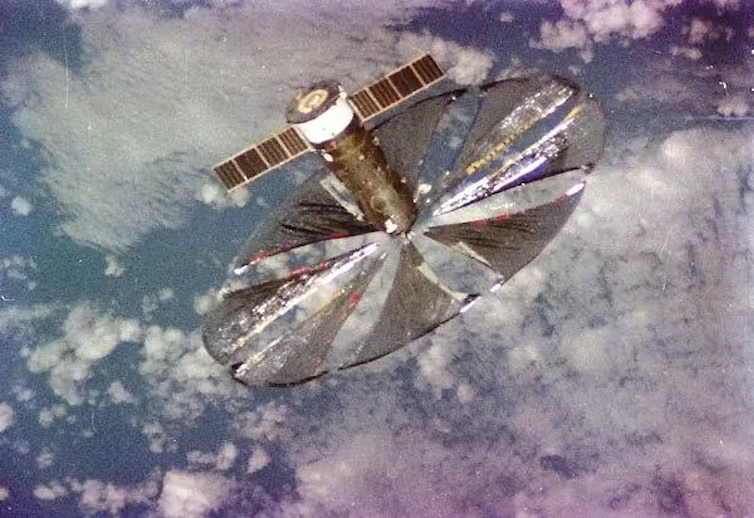
Pioneering rocket scientist Hermann Oberth recognised the potential all the way back in 1929, when he envisaged reflectors in space relaying sunlight to illuminate large cities and ship routes. He predicted that these reflectors would be very large, thin and ultralightweight, and built in space by astronauts wearing diving suits.
Colleagues and I recently published a paper in which we explored the possibility of orbiting solar reflectors in the near term. We think Oberth’s vision may now be achievable thanks to up-and-coming technologies such as robotic spacecraft that can manufacture and assemble structures in space. The reflectors and other materials necessary to build such large structures could be launched by modern rockets such as SpaceX’s colossal Starship.
Each time a reflector passes over a solar power farm, it could angle itself to illuminate the solar farm and its immediate surroundings. Each “pass” would extend the “day” of the solar farm and hence its hours of electricity generation.
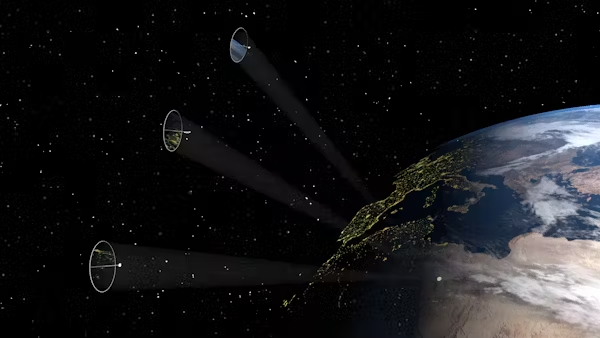
When the reflector can no longer illuminate the solar farm, it can be rotated such that it is edge-on to the Sun and no light is reflected to the ground. For this reason, we expect the potential disturbance to ground-based astronomical observations would be minimal.
Illuminate a 10km area
With the reflectors orbiting 900km above us – about twice the altitude of the International Space Station – we estimate that the illuminated area on the Earth would be approximately 10km across when at its brightest. Therefore, a system like this would not be aimed at individual rooftop solar panels but large solar power farms, typically located away from inhabited areas.
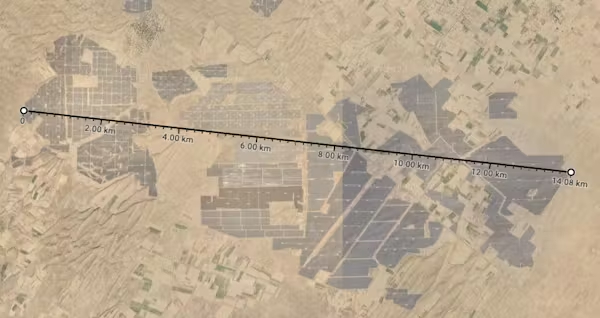
Each pass would extend energy generation by about 15 to 20 minutes around the dawn or dusk hours. This is important because those hours are when electricity demand is the highest and often exceeds the amount being generated by wind and solar, meaning coal and gas power plants are used to compensate. Reflectors may therefore help abate fossil fuel use without needing to store energy during the day.
These reflectors would be high enough to service multiple solar farms on the same orbit. Their orbits could even be used to inform where to build new solar farms in especially sunny regions.
Our proposal uses hexagonal reflectors with sides 250 metres long. Each weighs about 3 tonnes. It would currently cost a few thousand US dollars per kilogram to launch something like this into space, though costs are on a downward trend. If costs are reduced to a few hundred US dollars per kilo, then we would expect orbiting reflectors to be viable within a few years.
We expect these reflectors to operate for 20 to 30 years, though the carbon footprint of a system such as this is hard to estimate since spacecraft generally take a long time to design, build and operate. Further research will be needed to produce a full lifecycle assessment, but in the long run, we expect the reflectors would help generate enough clean energy to outweigh their carbon footprint.
No more nighttime?
Three days after the news of the Znamya-2 experiment was published in the New York Times, a reader wrote to the editor wondering whether we would give up our nights. The short answer is no.
Even at its brightest, we estimate that the illumination levels would last only a few minutes per reflector and not exceed an overcast day level. This means that, unless you are very close to the solar power farm, the illumination may not even be noticeable most of the time, especially at dawn/dusk times when the sky is already quite bright compared to nighttime.
We also estimate that the reflector itself would not be visible to the naked eye unless you are close to the solar farm. These estimations suggest that the impact of these reflectors on the natural environment around the solar power farm may also be minimal, though more research is necessary.
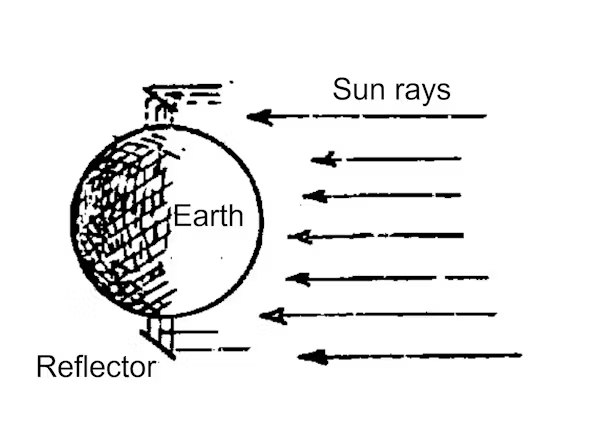
When the reflectors are old or no longer needed, they could “sail” on sunlight into less-congested higher orbits or into a lower orbit to burn up safely.
Orbiting solar reflectors are still some way off. But they represent a way to connect the space and energy sectors to help accelerate the transition towards clean energy and tackle climate change.
This article is republished from The Conversation under a Creative Commons license. Read the original article.
Follow all of the Expert Voices issues and debates — and become part of the discussion — on Facebook and Twitter. The views expressed are those of the author and do not necessarily reflect the views of the publisher.
Join our Space Forums to keep talking space on the latest missions, night sky and more! And if you have a news tip, correction or comment, let us know at: community@space.com.

I am currently a postdoctoral research associate in space technology at the University of Glasgow. My research interests are broadly in the fields space systems engineering and planetary science. As part of my research I primarily investigate orbits and their suitability for a given space mission. In my current role, I do this in the context of orbiting solar reflectors as a concept of space-based solar power to enhance the utility of solar power farms beyond the daylight hours.
-
Cisventure Astronot ReplyOur proposal uses hexagonal reflectors with sides 250 metres long.
Has anything so large ever been deployed in one launch? does anyone know if even a Starship could? -
Classical Motion That has to be one of the worse ideas I have ever read. Can this idea be serious? I thought the danger was warming?Reply
What is the best that we can do now.......22 or 23% conversion. The remaining 77% will be converted into heat.
This does not compute. Unless we are in an ice age. -
billslugg Yes, this is a horribly bad idea from many aspects, cost, damage to the dark skies inhibiting our ability to detect incoming asteroids. There are other, much better, sources of energy, namely nuclear, thermal drilling.Reply -
Cisventure Astronot Reply
I was thinking something similar, but dismissed the thought. That was before you mentioned how low solar panel efficiency was. And that assumes the entire ground is covered in solar panels. Not to mention that as the mirror rotates, it's going to illuminate random parts of the earth. But they said the light would be dimmer than an overcast day, and only last 15 min per mirror.Classical Motion said:That has to be one of the worse ideas I have ever read. Can this idea be serious? I thought the danger was warming?
What is the best that we can do now.......22 or 23% conversion. The remaining 77% will be converted into heat.
This does not compute. Unless we are in an ice age.
So would it be greener than burning coal? I can't say. Is it way less effective than burning coal until we have better batteries and/or switch to nuclear? Yes. Will it cost an imperial ton more than conventional methods? Also yes. -
Classical Motion I think coal is the best energy source we have. And apparently India and China think the same way.Reply
There are many advantages over oil and gas. And over nuclear and green energy.
Coal will remain King. I love the smell of coal in the morning. -
Åscend|Ofa|Wet|Rug Reply
Coal is established....that's why it is a go-to; there are waaaaay to many entities involved to be messing with it's status. Laziness and fear: two things MAN has created, and seems to adore.Classical Motion said:I think coal is the best energy source we have. And apparently India and China think the same way.
There are many advantages over oil and gas. And over nuclear and green energy.
Coal will remain King. I love the smell of coal in the morning.









